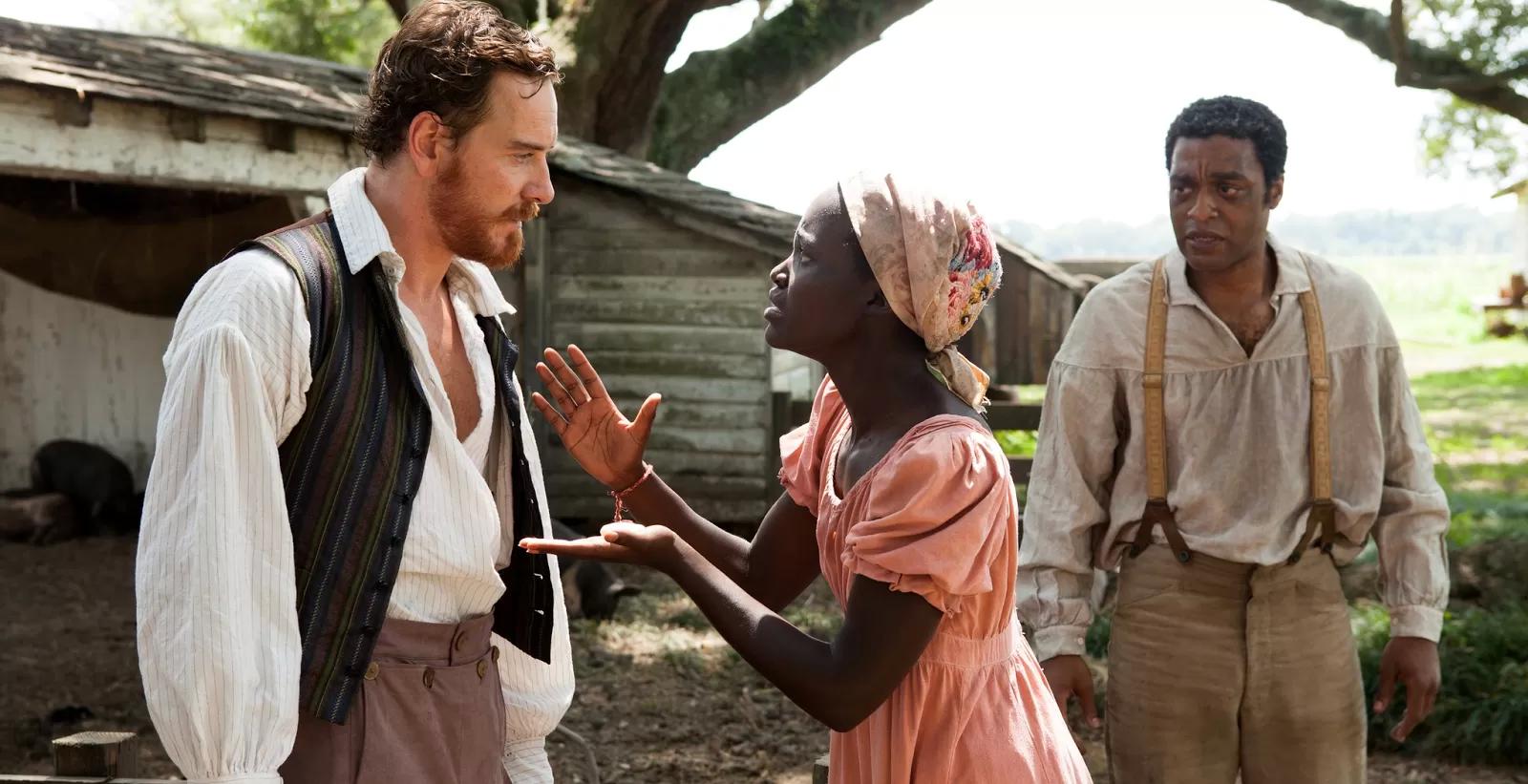
News
Cambridge Residents Slam Council Proposal to Delay Bike Lane Construction

News
‘Gender-Affirming Slay Fest’: Harvard College QSA Hosts Annual Queer Prom

News
‘Not Being Nerds’: Harvard Students Dance to Tinashe at Yardfest

News
Wrongful Death Trial Against CAMHS Employee Over 2015 Student Suicide To Begin Tuesday

News
Cornel West, Harvard Affiliates Call for University to Divest from ‘Israeli Apartheid’ at Rally
"12 Years" A Tale of Chaos and Cruelty
12 Years a Slave—Dir. Steve McQueen (Fox Searchlight)—4.5 stars

The most frustrating scene in “12 Years a Slave” occurs fairly early on in the film, once the free black man Solomon Northup (Chiwetel Ejiofor) has been kidnapped and awaits his sale as a slave. Trapped in a Washington, D.C. prison, he cries out, “Help me! Somebody help me!” Slowly, the camera pans up—past the bars of his prison, past the rooftops, until it finally settles on the imposing dome of the US Capitol. The most irksome thing about this shot is how it suggests the rest of the film will be just as heavy-handed. Instead, “12 Years a Slave” is a remarkably subtle film. Though it has a strong sense of morality, it rarely moralizes, letting the atrocities onscreen speak for themselves. Brutal, painful, and harrowing, it stands as one of the finest films of the year.
“12 Years a Slave” is based on the eponymous book by Northup, who was tricked into leaving his home in Saratoga Springs, New York and ended up as a slave in the Deep South for more than a decade. At the heart of this story, there’s a terrifying absurdity—terrifying because this is Northup’s new reality. Director Steve McQueen smartly capitalizes on this, lending the earlier scenes of the film an almost Kafkaesque quality; whenever Northup tries to assert his identity as a free and educated man, he’s mercilessly beaten and told that his name is “Platt.” These scenes have a pummeling effect, and not just because of the constant violence—they forcefully present the cruelty of slavery in a hauntingly absurdist manner.
These early scenes also display the magnificent talents of Ejiofor. Northup is a complex character—he’s traumatized but somehow supercilious, polite yet defiant, and tortured but guarded—but Ejiofor manages to carry off these diverse attitudes convincingly. One of the final shots in the film simply focuses on Ejiofor’s face as he silently stares into the camera; it’s a long take, and it would have been wasted on a less subtly expressive actor.
Had Ejiofor faltered, “12 Years a Slave” would likely have fallen apart; despite the considerable talents of supporting actors like Michael Fassbender, Paul Giamatti, Benedict Cumberbatch, and, yes, Brad Pitt, the film’s only consistent thread is Northup, who’s shuttled around from slaveowner to slaveowner . The film’s closest analogue is Roman Polanski’s “The Pianist,” another story of a hapless individual caught up in tragedy on a massive scale. Like that film’s protagonist, Wladysaw Szpilman, Northup doesn’t so much make history as experience it; random events befall him, and somehow he survives. This randomness of the film turns into one of its most compelling aspects, as it mirrors the uncertain nature of life on a plantation. Violence erupts out of thin air, and often from unlikely sources: one of the film’s most shocking moments comes when Fassbender’s jealous wife throws a crystal decanter at a slave girl, piercing her cheek. Despite the Hans Zimmer score, this is ferociously unsentimental stuff.
Thankfully, the loose plotting doesn’t only function as commentary; it also allows McQueen to develop the various characters at a natural pace. Had the episodic quality of “12 Years” been contorted into a clear narrative arc—or worse, had each episode been devised as a moral fable—characters like Cumberbatch’s kind slave-owner would have become mere stereotypes. Only Brad Pitt, who plays a Canadian saint deposited into the Deep South, is forced to make do with a less than three-dimensional figure; even the outrageously cruel slaveowner Epps, played by Fassbender, is distinguished by his unsettling religious fervor.
Although the film doesn’t exhibit a three-act structure or a classical dramatic arc, it never lacks purpose. When the real Northup published “Twelve Years a Slave” in 1853, his aim was to inform the public of the horrors of slavery. McQueen’s film will surely remind its audience of that blight on American history. But it doesn’t limit itself to that. Subtly but surely, it shows the awakening of Northup’s conscience. Early on in the film, Northup, playing a fiddle at a slave auction, witnesses a mother being torn from her son. As she cries hysterically, he doesn’t know how to react; all he can do is pick up his instrument and frantically saw away. By the end of his twelve-year sentence, he knows exactly what to do.
—Staff writer Petey E. Menz can be reached at petey.menz@thecrimson.com.
Want to keep up with breaking news? Subscribe to our email newsletter.
